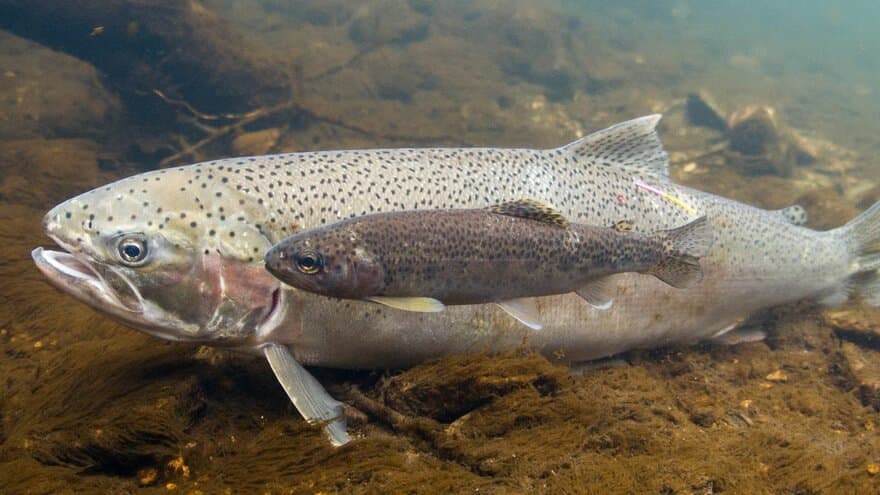What determines whether a fish migrates into the sea or not? Research breakthrough published in Nature Ecology & Evolution provides significant new insights.
Scientists have uncovered the genetic mechanism that maintains different life strategies in rainbow trout - migration to the ocean and life in freshwater.
The findings were published in the prestigious journal Nature Ecology & Evolution this week. The work has been led by researchers at the Centre for Integrative Genetics (CIGENE) at NMBU.
Rainbow trout is a species of Pacific salmon with a similar lifestyle to the European brown trout. While some trout spend their entire lives in freshwater (rainbow trout), others migrate to sea to feed and grow before returning to spawn in freshwater (steelhead trout).
The difference between these two lifestyles is so great that they were thought to represent two species for a long time. Going to sea can be highly profitable as there is more food which can be invested in producing eggs or becoming a large dominant male.
However, the sea is also a dangerous place and some trout may not survive to reproduce at all.
This cost-benefit balance is different between the sexes, with females gaining more from going to sea than their male counterparts. This results is more females migrating than males, but it has previously not been understood what mechanism underlies this difference.
In other species, such as humans, sex-specific differences are caused by genes and variation distributed along the sex chromosomes that clearly differ between males and females.
However, unlike the X and Y of humans, rainbow trout sex chromosomes are not dramatically different and so are able to exchange genetic information freely.
A study led by researchers at NMBU and published this week in Nature Ecology and Evolution describes a large "supergene" on chromosome 5 that influences whether the trout migrates or not.
The supergene is formed because two large sections of this chromosome have been flipped around, with the resulting mirror-image chromosome variants unable recombine, allowing them to become different over time.
«Whilst these differences influence whether the individual trout migrates to sea or not, they are not enough on their own to explain the sex differences in seaward migration. This sex difference comes about because the variant that increases the chance of migrating to sea is dominant over the one that makes them tend to stay in females, while the reverse is true in males. This mechanism helps to resolve the conflict between male and female trout over whether to migrate or not without the involvement of the sex chromosomes,» explained Sigbjørn Lien, director of Cigene and professor of genetics at NMBU.
Pearse, D.E., Barson, N.J., Nome, T. et al. Sex-dependent dominance maintains migration supergene in rainbow trout. Nat Ecol Evol 3, 1731–1742 (2019) doi:10.1038/s41559-019-1044-6
